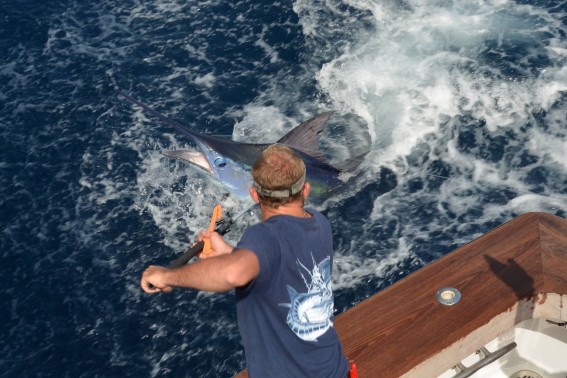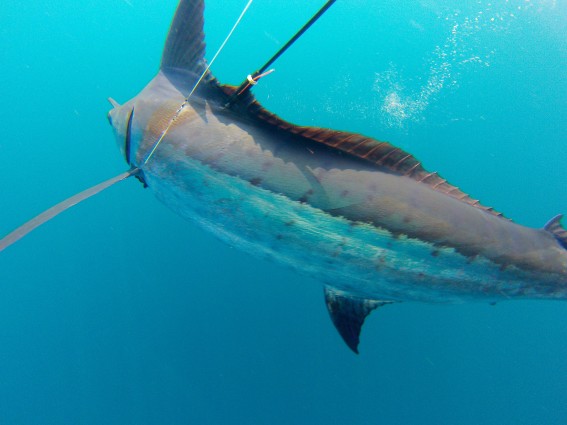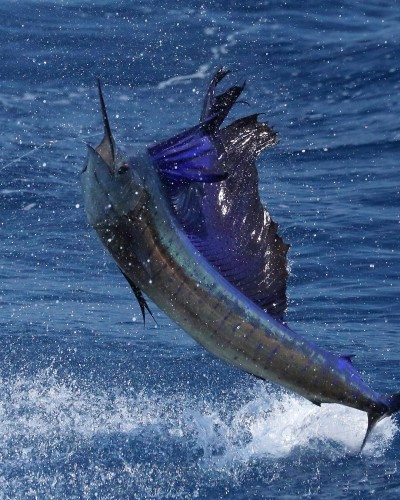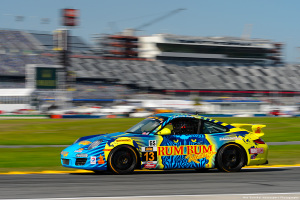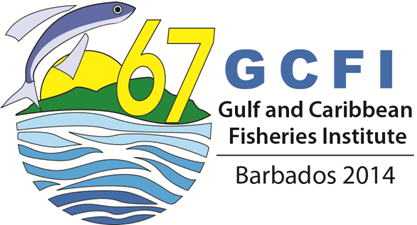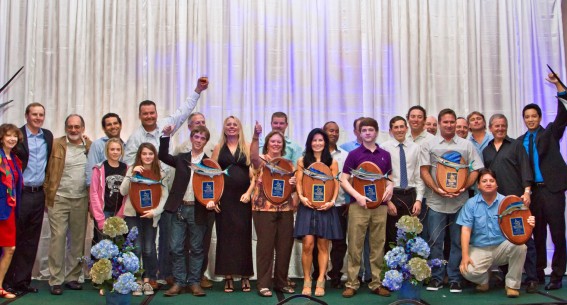
The tag and release reports are in and the results have finally been tallied. This year was truly a record year for billfish anglers and for TBF’s Tag & Release Program. Below are some of the top anglers and captains from across the world at the apex of this amazing sport. Congratulations to all the winners and we hope to see everyone at our awards ceremony on Friday, February 13 in the Treetop Ballroom at Jungle Island during the 2015 Miami International Boat Show. See below for more information. Winners are asked to RSVP for the event by Monday January 12.
Every year, The Billfish Foundation (TBF) recognizes the captains, mates and anglers (including youth and ladies) who tag and release the most billfish in each of the world’s oceans. The competition is categorized by billfish species, ocean, and whether the fish were tagged or released untagged. Award winners are recognized at TBF’s Annual Tag & Release Awards Ceremony held during the Miami International Boat Show presented by the TBF’s 2014 Tag and Release Sponsors: Bisbee’s Fish and Wildlife Conservation Fund, Casa Vieja Lodge, Costa Sunglasses, PELAGIC, King Sailfish Mounts and SIMRAD.
The Billfish Foundation’s Annual Tag and Release Ceremony will be held Friday, February 13, 2015, in the Treetop Ballroom at Jungle Island. The evening will kick off at 6:30 PM with cocktails followed by the award presentation and dinner. Proceeds benefit TBF’s tag and release program. Get your tickets for the 2015 Tag & Release Award Ceremony here.
Please note that for all anglers, captains and mates to receive their awards they must be current TBF members. You can join or renew your memberships online.
Top Overall Tag & Release Winners
Overall Release Captain – Chris Van Leeuwen
Overall Tagging Captain- Chris Sheeder
Overall Release Angler – Pat McCotter
Overall Tagging Angler – Keith Brandner
Overall Release Lady Angler – Tiffany Sisolak
Overall Tagging Lady Angler – Sandra MacMillan
Overall Release Youth Angler – Gregory Benn
Overall Tagging Youth Angler Shawn MacMullin
Top Tagging Angler- Atlantic Ocean
Blue Marlin – Gray Ingram
Sailfish – Kasey Swan
Swordfish – Matt Bierley
White Marlin – Laurent Sahyoun
Top Release Angler- Atlantic Ocean
Blue Marlin – Gray Ingram
Sailfish – Gray Ingram
White Marlin – Gregory Benn
Top Tagging Captain- Atlantic Ocean
Blue Marlin – Ronnie Fields
Sailfish – Fin Gaddy
Swordfish – Mark Pagano
White Marlin – Christian Benazeth
Top Release Captain- Atlantic Ocean
Blue Marlin - Ronnie Fields
Sailfish – Dean Panos
White Marlin – John Mumford
Top Tagging Angler- Pacific Ocean
Black Marlin – Brady Wild
Blue Marlin – Keith Brandner
Sailfish – Darryl Schroeder
Striped Marlin – Robert Hendricks
Top Release Angler- Pacific Ocean
Black Marlin – Barry Alty
Blue Marlin – Pat McCotter
Sailfish – Bill Easum
Striped Marlin – John “Jack” Duvall
Swordfish – John Gregory
Top Tagging Captain- Pacific Ocean
Black Marlin – Tim Richardson
Blue Marlin – Josh Temple
Sailfish – Chris Sheeder
Spearfish- Gene Vander Hoek
Striped Marlin – Jaime Gonzalez
Top Release Captain- Pacific Ocean
Black Marlin – Brett Alty
Blue Marlin – Pete Rae
Sailfish – Chris Van Leeuwen
Striped Marlin – Chris Bays
Swordfish – John Gregory
Top Tagging Angler – Indian Ocean
Black Marlin – Scott MacGowan
Sailfish – Jo-Ann Riley
Top Release Angler – Indian Ocean
Black Marlin – Murray Teasdale
Sailfish – Henry Riggs-Miller
Top Tagging Captain- Indian Ocean
Black Marlin – Eddy Lawler
Blue Marlin – Eddy Lawler
Sailfish – Jourdain Ellens
Striped Marlin – Eddy Lawler
Top Release Captain – Indian Ocean
Black Marlin – Eddy Lawler
Blue Marlin – Ross Newton
Sailfish – Rolly Pierre
Youth Tag Divisions
8 and Under
Charles Gaddy & Kyler Swan (TIE)
Runner-up – Caden Alexander
9-10
Aidan Burke
Runner-up – Kasey Ray Swan
11-12
William Stark
Runner-up Kaleb Richardson
13-15
Shawn MacMullin
Runner-up – Bo Ingram
16-17
Nick Brackmann
Youth Release Divisions
8 & Under
Brown Gaddy
11-12
Jonathan Gaskill
13 – 15
Bo Ingram
Runner-up- Shawn MacMullin
16-17
Gregory Benn
Runner-up Curtis Englert
GOM Marlin Tagging Competition
Top Tagging Captain Blue Marlin
Al Roper- Michi
Top Tagging Captain White Marlin
Don Thrasher – Business Interruption
Top Overall Tagging Captain
Jimmy Crochet – Conundrum
Top Overall Tagging Boat
Conundrum – Capt. Jimmy Crochet
The post 2014 Tag & Release Winners! appeared first on The Billfish Foundation.


